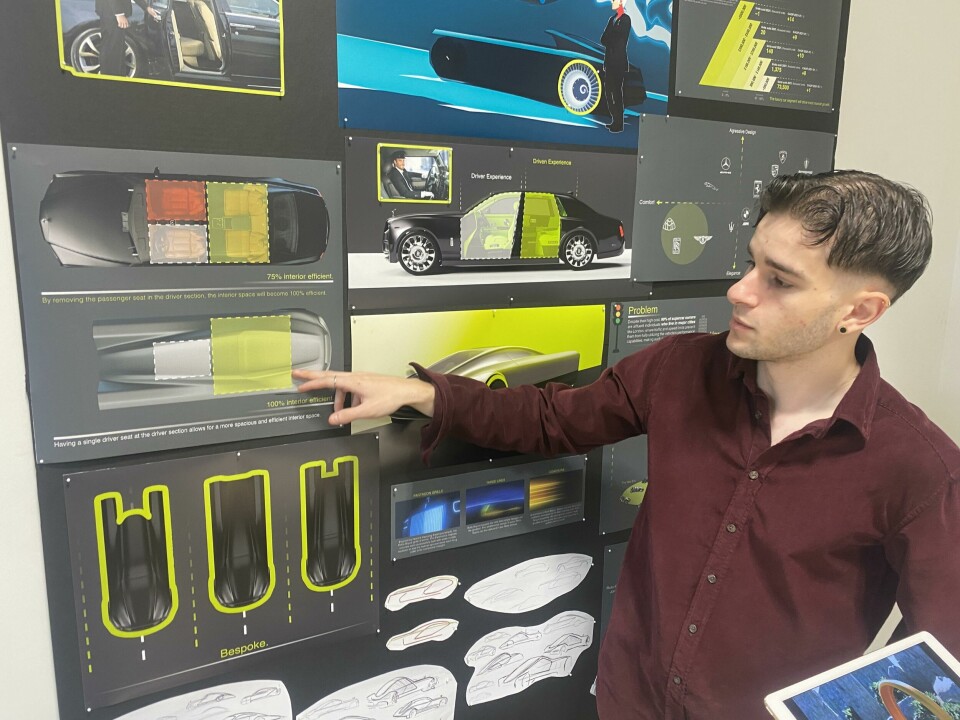
RCA show looks into the future of mobility
Car Design News went along to see the latest work by students at the Royal College of Art’s Intelligent Mobility Exhibition
The Royal College of Art’s Intelligent Mobility Exhibition always provides some fascinating insight into the future. This year some of the projects shown at the RCA’s Battersea campus had something of a dystopian feel about them and I left thinking that a world after cars is going to be like the docuseries Life After People.
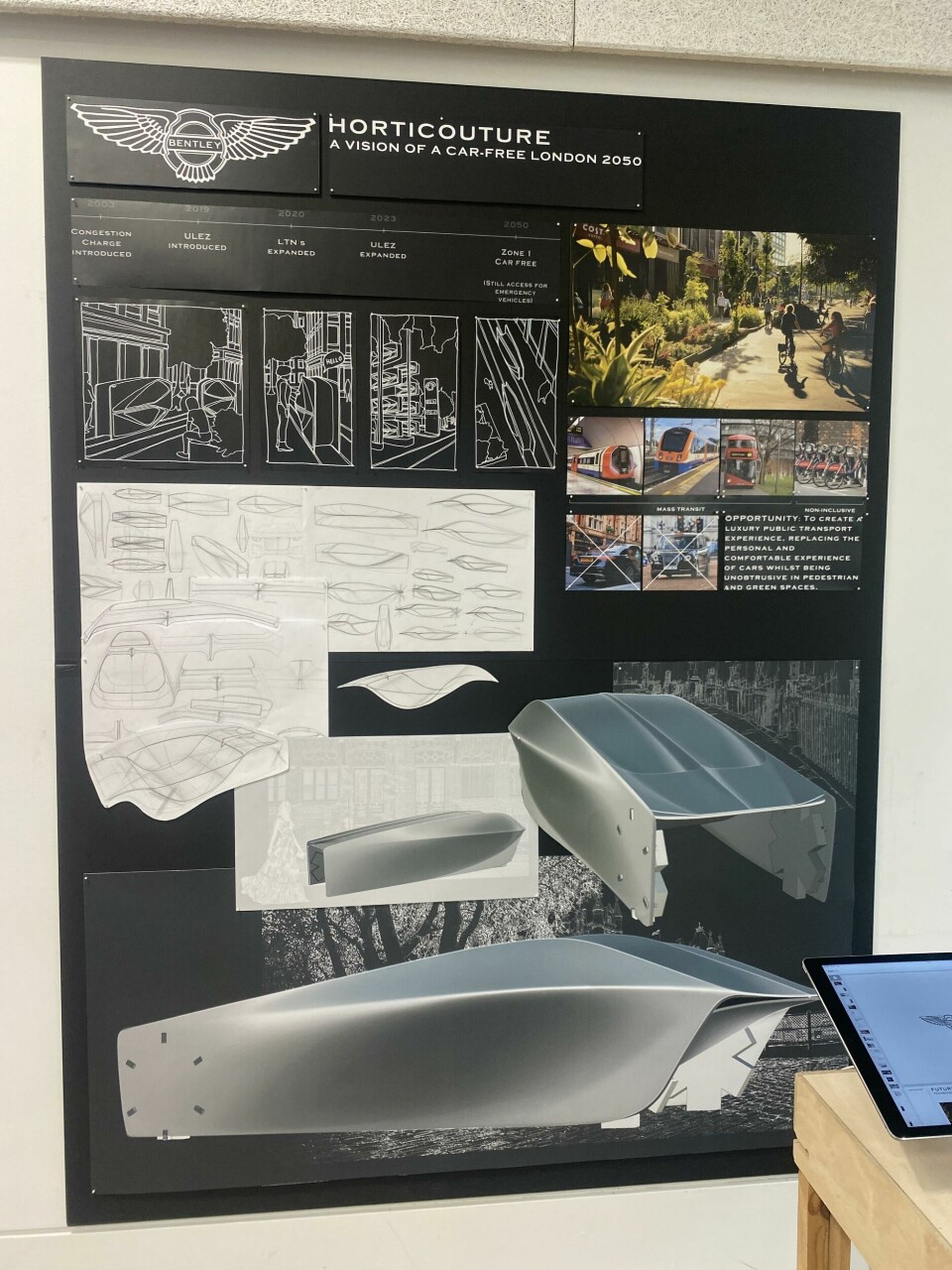
For some that won’t be a negative of course. The idea of cities without cars holds great appeal for many, where nature is a dominant force and only autonomous electric pods like Liam Boylan’s Horticouture are allowed to whizz people through the streets, mixing with bicycles and personal mobility solutions.
Quite a few projects, including Trisha Mehta’s Visions for the Future of Mobility suggested multiple solutions, from urban planning to sustainable materials, taking a holistic approach to the future of our cities.
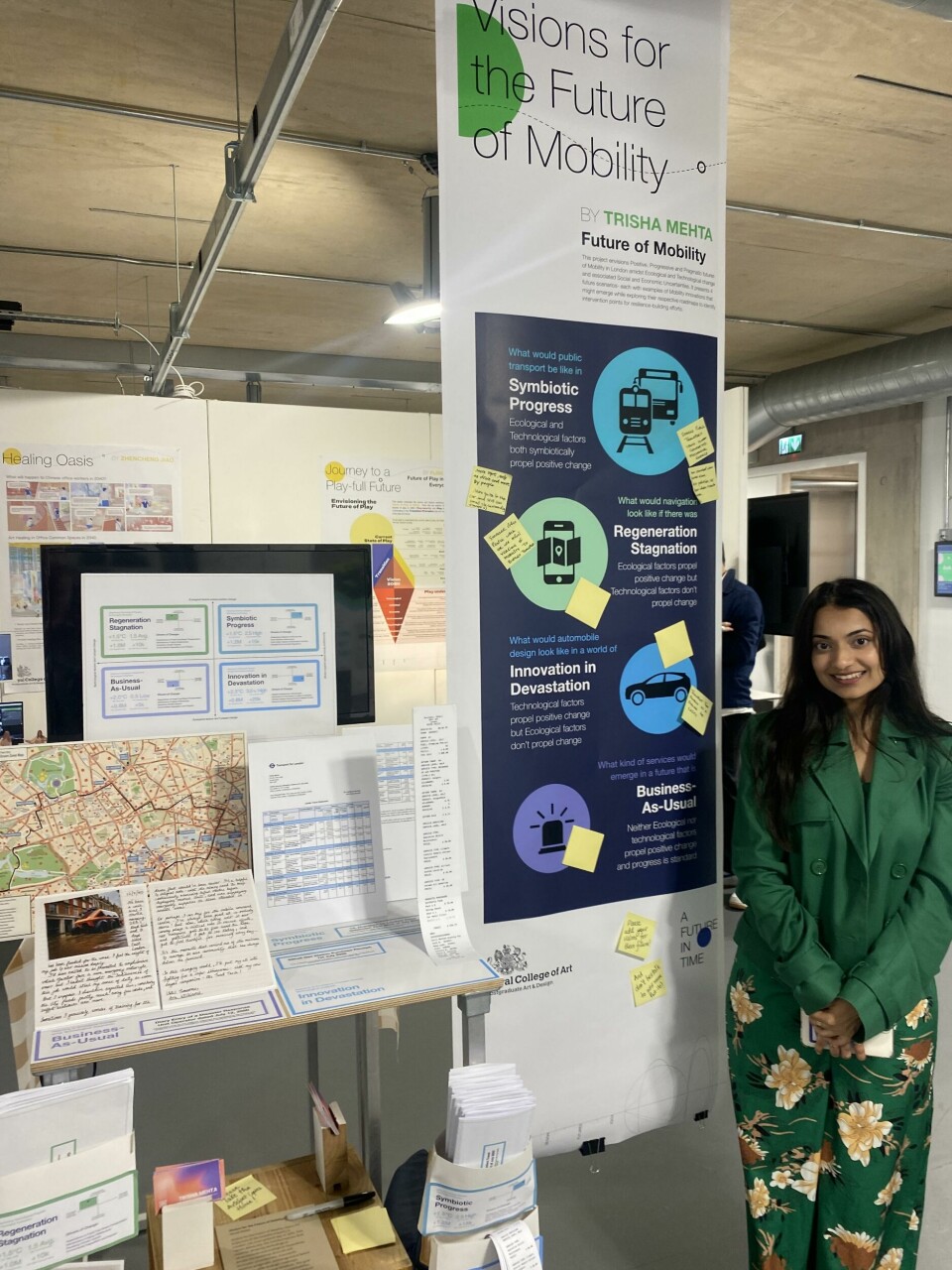
Beyond the dystopian view, nature was a recurring theme. Nature in the home through noise cancelling speakers, which block out the outside noise of traffic or in the future, drones and replace it with sounds of nature.
It is a fantastic idea that you have to wonder why no-one has thought of before. The sounds of nature was a common theme too, with AI responding to the mood of occupants, calming them with the sounds of Hawaiian waves or the wind in the trees in Yeonhee Kim’s AI Mood Optimised Mobility project.
Then there was nature in pods, with Weijie Shi’s living garden city taxi and Juhan Ma’s Flow of Foliage envisioning sitting among foliage in a pod as you travel to your destination. Understandably there was also a big focus on natural materials in the textiles exhibition.

Nicolà Borrer’s Nomad campervan perfectly blends the practicality of a camper with yacht-like interior luxury and superb design
An interesting take on the nature theme was the Azure Oasis by Bushan Shridhar Phanse. It focuses on biophillic natural luxury, looking at how sand forms around the human body when you sit on the beach, or the way a smooth pebble sits in your hand.
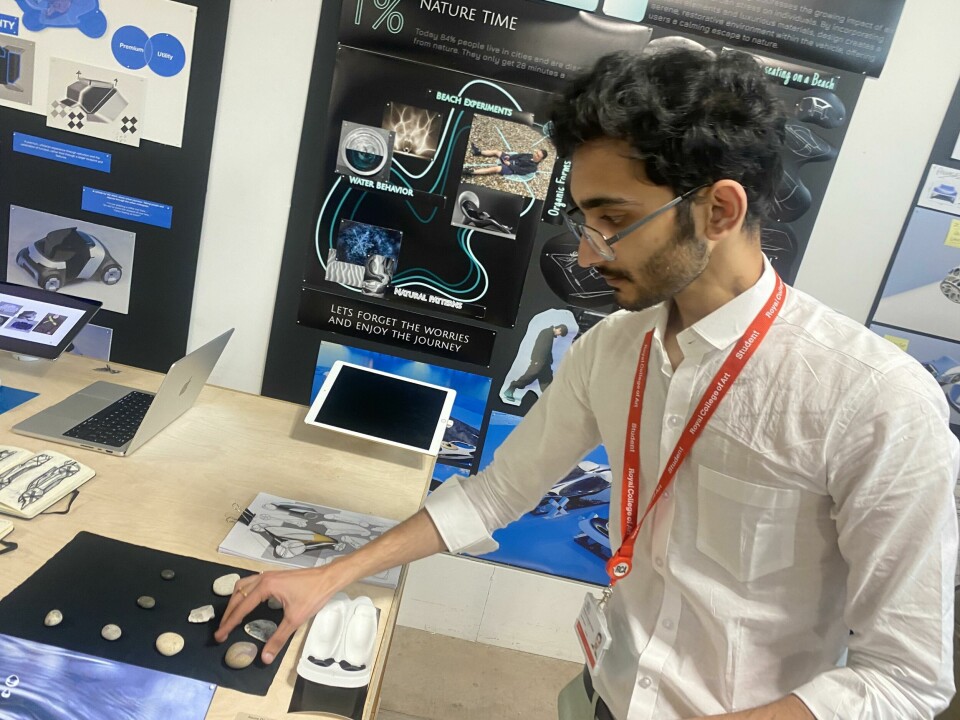
In the project he recognises that interior design of the future can focus more on surfaces that feel calm without relying on additional aural or visual sensations.
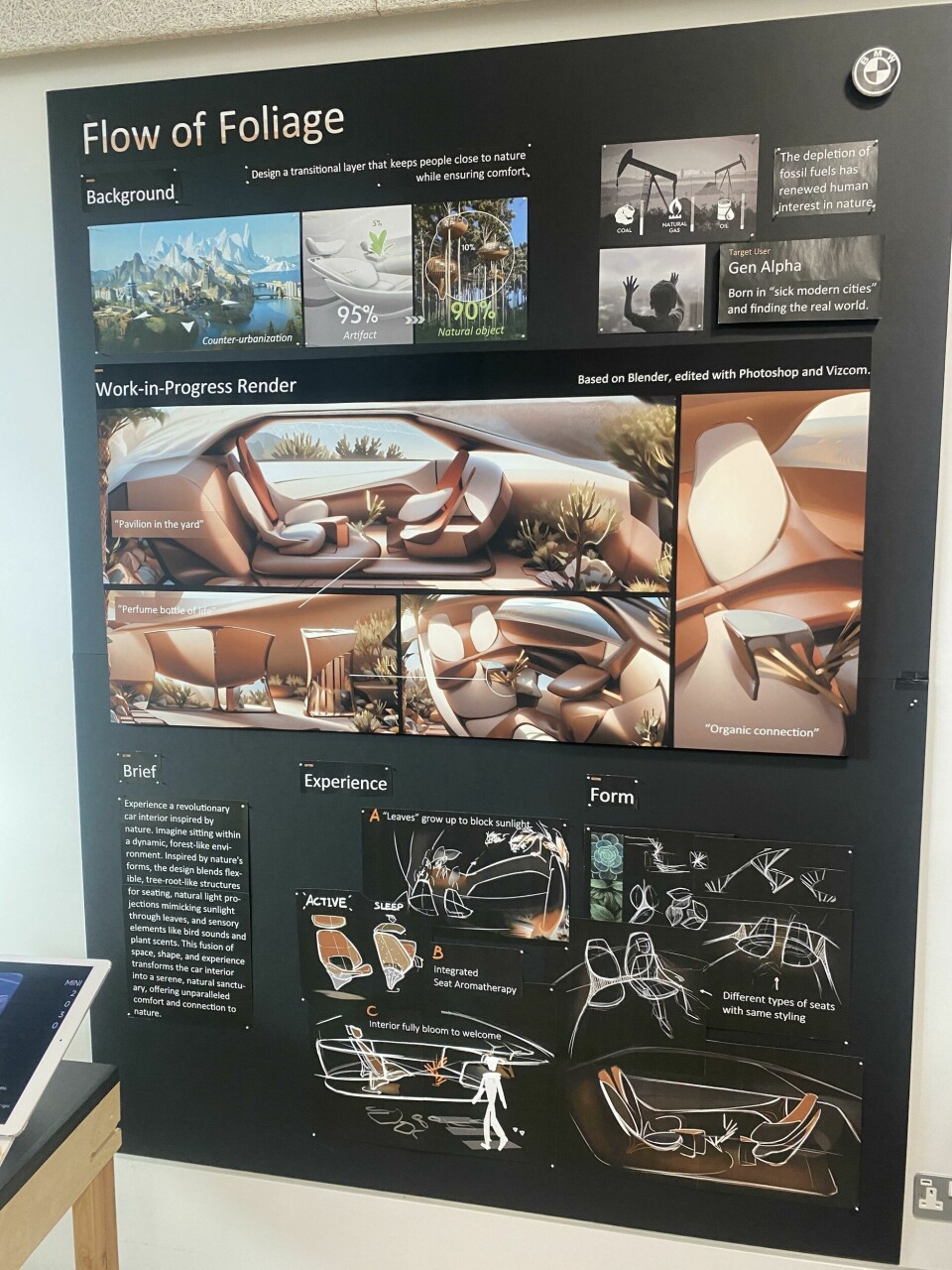
Nicolà Borrer’s Emergence project aims to get people out of planes and into pods, with multiple pods able to link up and form connected convoys, similar to trains, to take occupants between cities. One has to wonder how many pods would be needed to replace planes, not to mention the additional roads required.
It might have been a 2023 project, but Borrer’s Nomad campervan is something I could discuss all day. It perfectly blends the practicality of a camper with yacht-like interior luxury and superb design. Originally supported by Volkswagen, there are no plans to create Nomad but if any investors are keen, then I’ll consider taking one.
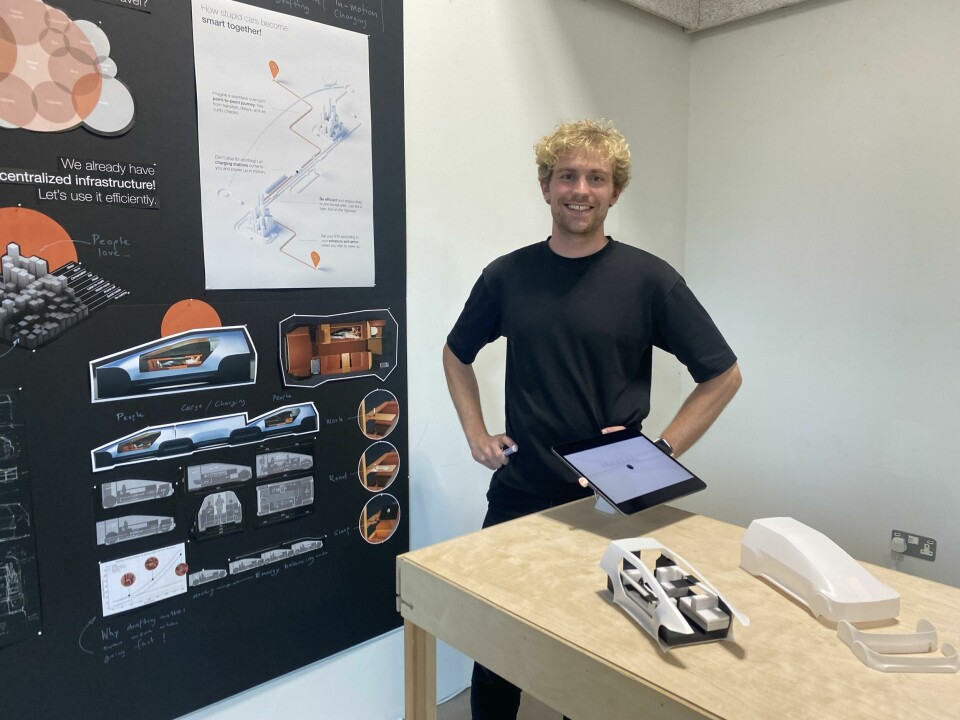
Another theme was mobility solutions for the elderly and those with mobility needs. Hailong Li’s Elderly Wellbeing Minibus addresses this for elderly residents in China, while Henrik Svanvig created LIB.R8 as an autonomous private vehicle for the elderly in 2050.
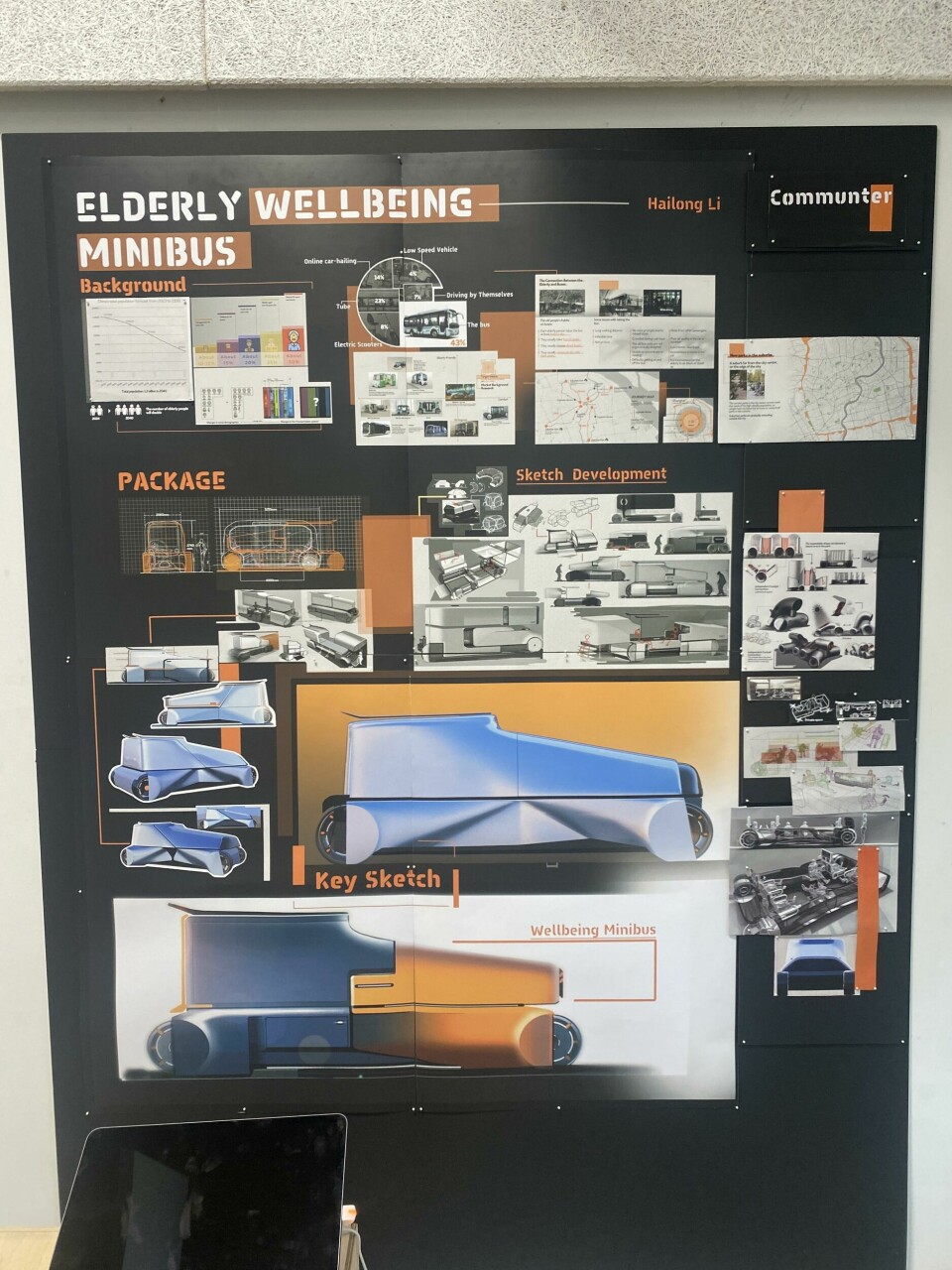
It acknowledges the ageing global population and provides step-free access and a robotic companion to help with basic tasks both inside and outside the vehicle.
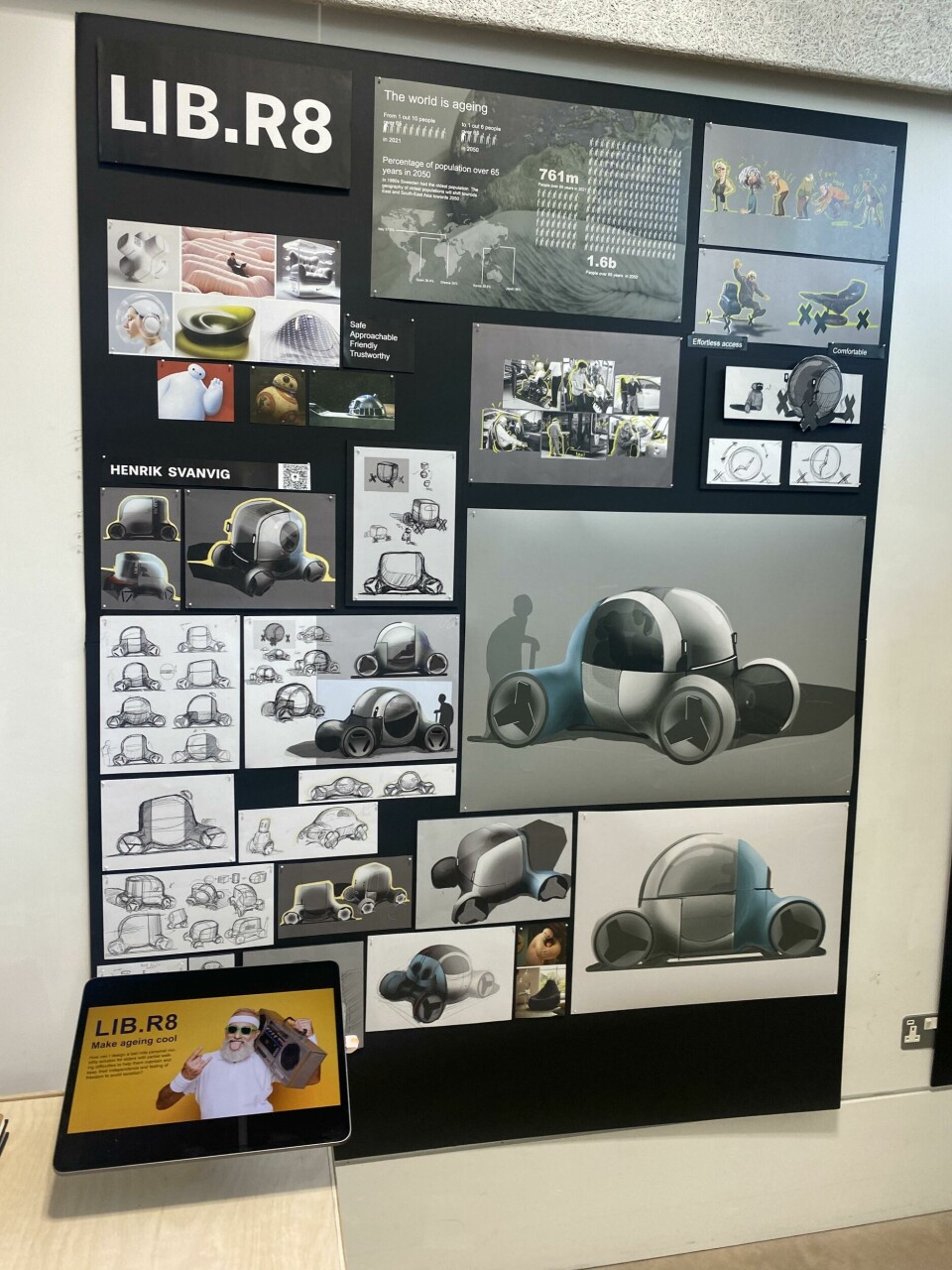
The super wealthy might already have a companion in the form of their driver. With Omni, Bartu Harmandagli envisages the Rolls-Royce of pods, where a company owns the technology and platform, but individuals own the pod with a choice between cabins for work, leisure or wellness.

Interestingly, Harmandagli has removed the front passenger seat, with the view that it is unnecessary in a vehicle where occupants typically only sit in the rear. It’s a valid point that questions why 25% of the space in a Rolls-Royce goes unused most of the time and could be utilised in a better way. It would be interesting to hear what Anders Warming has to say about that.
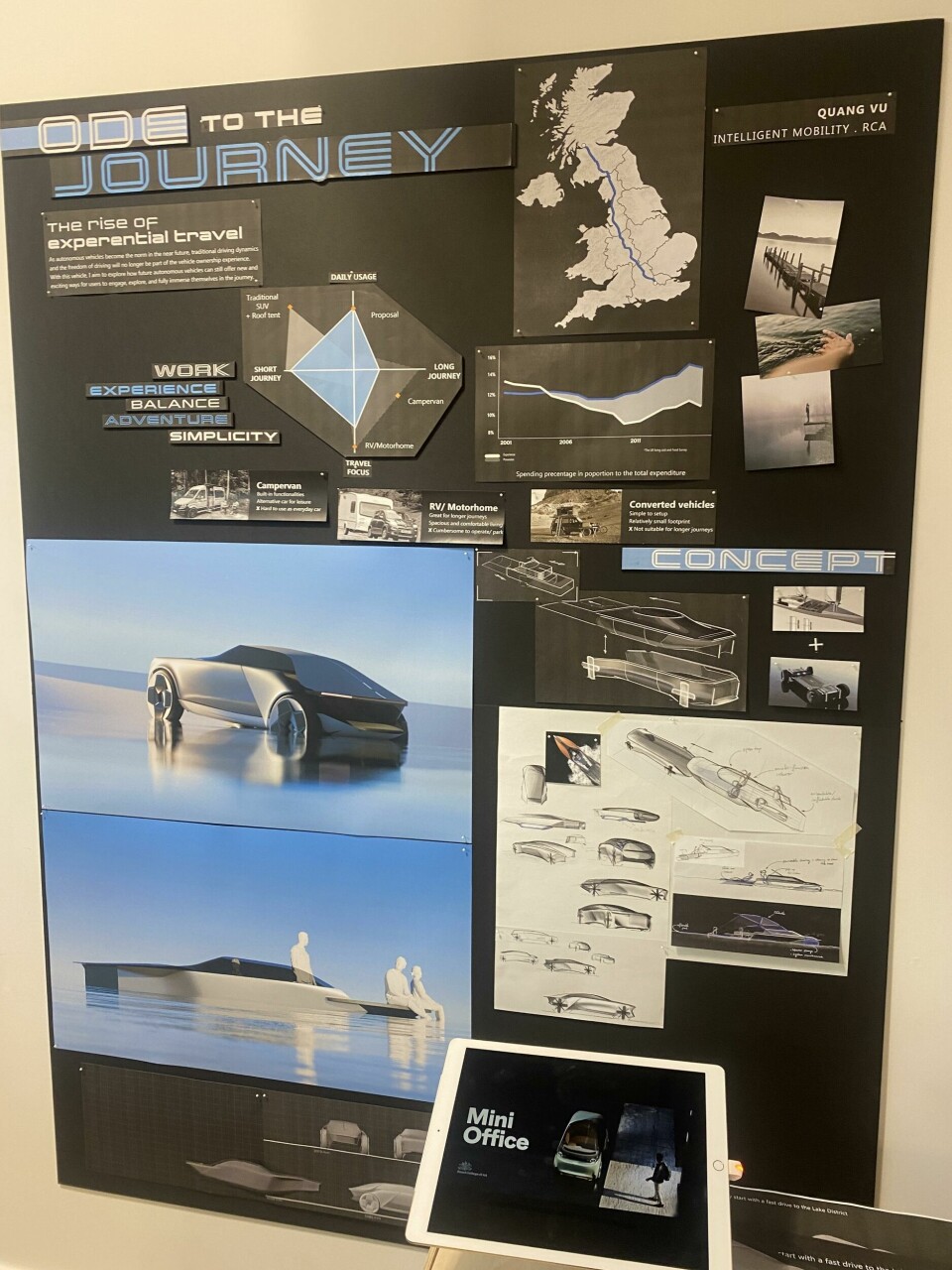
Experiential luxury travel was a theme across a number of projects, including Ode to the Journey by Quang Vu. It showcases a luxury car that also serves as a day boat, bringing back the days of the amphibious car but in a way that demonstrates a vision for the evolution of existing design.
Despite the dystopian feel and the urge to run off and join a climate action group, the show featured some wonderful projects and great insight into the future of not just automotive design, but urban design too
It is that evolution that was also present in Charley Orr’s Apogee, a project that is not only a sports car for the future, but looks like one as we would recognise it today. The Sustainable City Sports 2040 sticks to some traditional principles of sports car design but recognises the need for a more sustainable approach without being too out there. This made it one of the most relatable projects on show but at the same time it had sufficient futuristic cues.
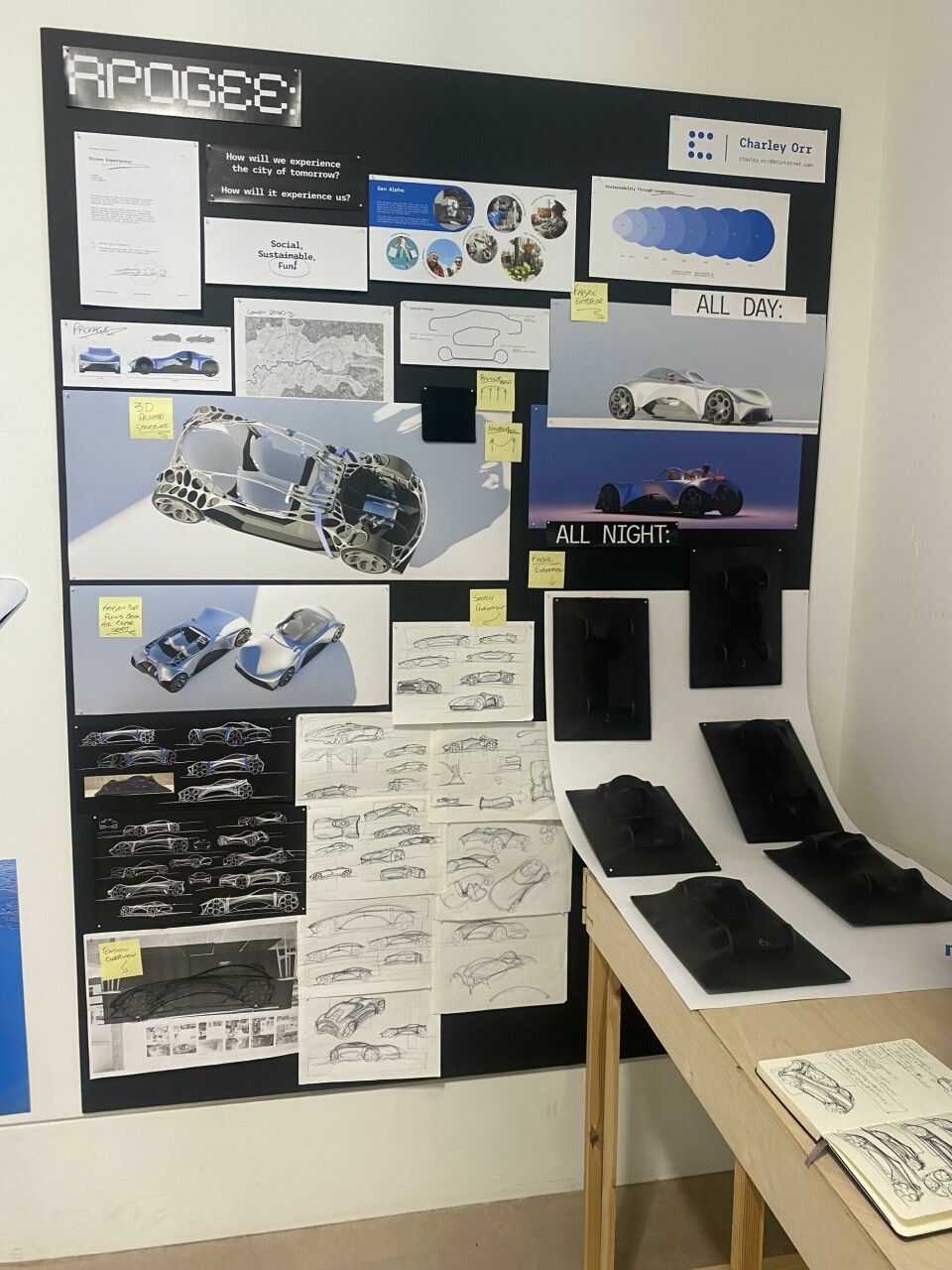
Sustainability was an underlying theme for many projects, but few brought it to the fore like ReFORM. Joseph Metni explained that his project is based on the principles of pace layering, allowing different layers to be replaced rather than the whole vehicle.
Finally, there were quite a few adventure projects. These ranged from Cedrik Lapointe’s Trailblaze desert vehicle to Wen Xing’s dramatic Extreme Cold hydrogen vehicle, designed to tackle the coldest parts of the world in comfort and warmth.
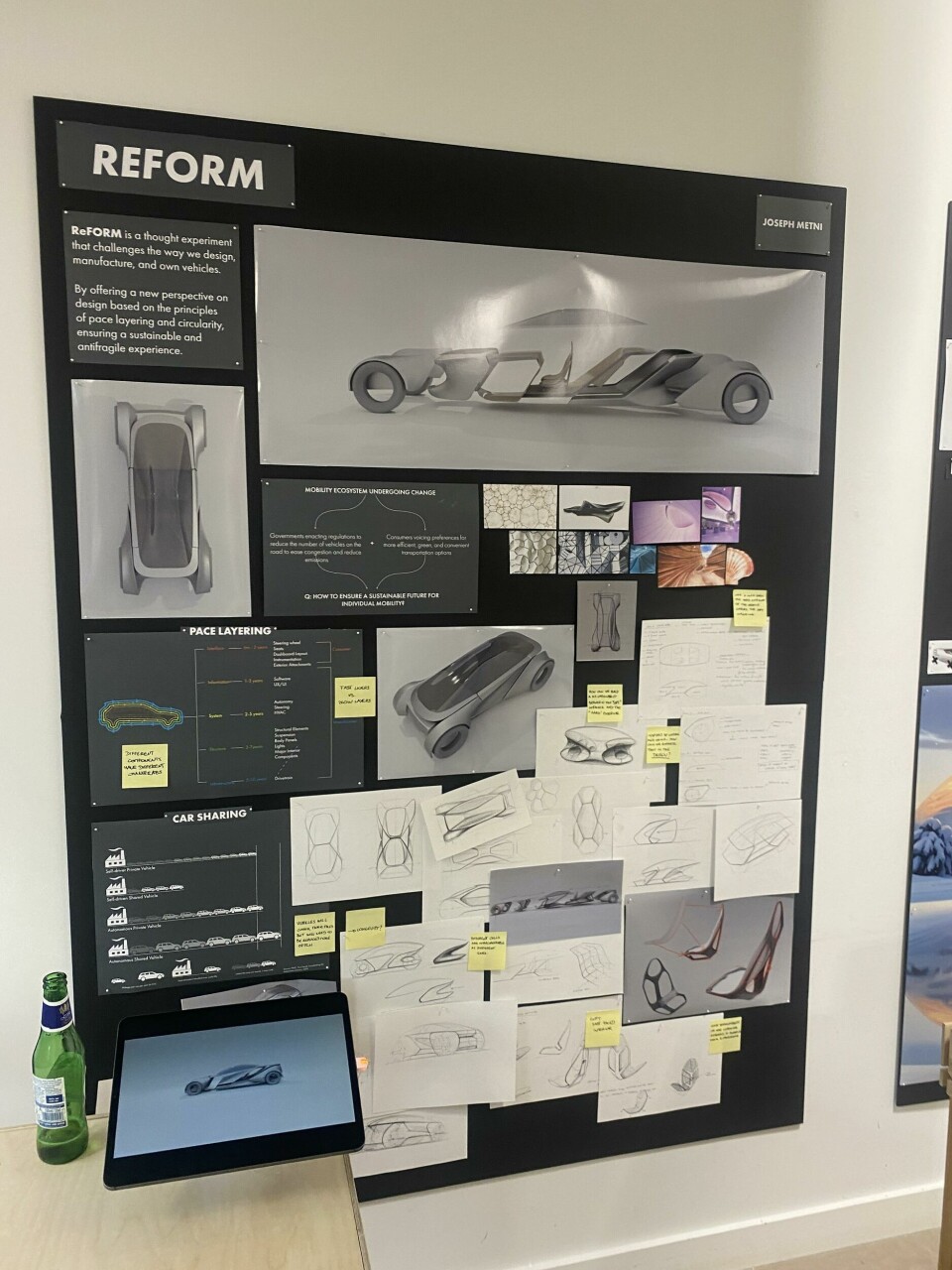
Despite the dystopian feel and the urge to run off and join a climate action group, the show featured some wonderful projects and great insight into the future of not just automotive design, but urban design too. Some appeared a bit formulaic, as though they had been created to meet what students thought people would want to see, while others dug deep into their creative depths to pull out what truly felt like their vision for the future. Chatting to a number of full-time automotive designers at the show, there were mixed reactions, but equally importantly, there was lots of inspiration and conversations that hopefully will lead to exciting developments.



